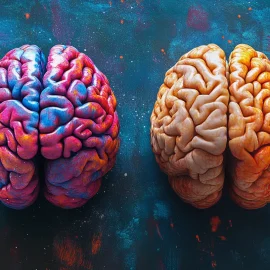

This article is an excerpt from the Shortform book guide to "Solve for Happy" by Mo Gawdat. Shortform has the world's best summaries and analyses of books you should be reading.
Like this article? Sign up for a free trial here.
What is “the path”? How can it help you with accepting change in life?
Mo Gawdat’s formula for happiness involves understanding that change is inevitable. If you don’t embrace change, you’ll suffer. He argues that pursuing “the path” is the best way to stop resisting change in life.
Continue reading to discover Gawdat’s advice for accepting change and see how this is connected to your happiness.
Accepting Change in Life
Gawdat’s second pillar complements the misconception of control. Control is illusory, he argues, because change is constant and inexorable.
Despite the inevitability of change, we attempt to control our lives and resist changes to it. Because change upends our best-laid plans, our expectations are rarely met, which makes us unhappy. For example, you might enter college preparing to enter an in-demand field, only to have your plans upended when, upon graduating, the same field is oversaturated with recent graduates. Accepting change in life is necessary if we are to find joy.
(Shortform note: In Super Thinking, Gabriel Weinberg and Lauren McCann emphasize that change is especially prevalent in business contexts. Consequently, they argue that to succeed, businesses must adapt to changing societal preferences by consistently reevaluating their assumptions, which quickly become outdated in the face of broad change.)
To reach lasting happiness in the face of constant change, Gawdat recommends pursuing “the path,” a concept synthesized from Buddhism, Islam, and ancient Chinese philosophy. Simply put, following the path requires letting your life reach equilibrium—the point of effortless acceptance where we no longer resist change. (Shortform note: Buddhism promotes the Eightfold Path, which describes eight elements necessary for enlightenment, including mindfulness and good intentions. In Islam, following the Straight Path leads to Allah by obeying his commandments. In ancient Chinese philosophy, tao means “the path” or “the way”; within Taoism, the Tao refers to the natural order of the universe and the guiding energy within us that connects us to everything around us.)
On a more practical level, following the path entails not pushing for extremes. For instance, rather than exercising incessantly on one extreme, or steadfastly avoiding exercise on the other, exercise in moderation.
| The Three Truths of the Path According to the Buddha, following the path requires accepting three key truths, called the marks of existence: • Unsatisfactoriness—suffering—is pervasive because we’re ignorant of the true nature of reality. • Impermanence is ubiquitous since reality is composed of fleeting moments. Consequently, we suffer because we fail to recognize this impermanence. • There is no enduring self underlying our subjective experience. Our illusory attachment to our “self” causes us to suffer. In Buddhism, embracing these marks of existence ameliorates our ignorance and leads to nirvana, the end of suffering. |
When you accept that change is part of life, you’ll find that your efforts work with change, rather than against it; you’ll be swimming with the current rather than floundering against it. Consequently, your expectations will be better aligned with reality, which allows you to consistently be happy.

———End of Preview———
Like what you just read? Read the rest of the world's best book summary and analysis of Mo Gawdat's "Solve for Happy" at Shortform.
Here's what you'll find in our full Solve for Happy summary:
- The six misconceptions that cause us to suffer
- How to remove the seven weaknesses that hinder your happiness
- The five pillars to becoming permanently happy






